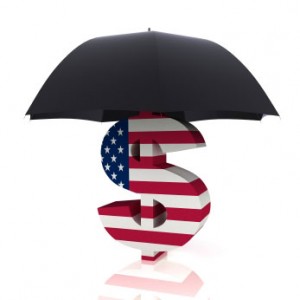
Notify Credit Card Companies
Begin by calling your credit card company before you start, especially if your travel plans will take you out of the country. If charges begin popping up in places the company is not used to, your account may be flagged as being suspicious. The company could try to contact you to verify the out-of-area transactions. Or they could simply freeze your card. They do that, of course, to protect you in the case of card theft, but it can play hob with your travel plans. It could cut you off from the source you expected to use to finance your travels and cause more consternation than you’d care to deal with away from home.
Some card issuers have provisions for you to notify them online. Log onto the account and look for “travel notification” or other tab that allows you to alert them to where you will be and for how long. Some companies are aware of the frequent travelers they serve and don’t require notification for every trip. But, as the old saying goes, “Better safe than sorry.” A few minutes of precautionary effort could save a lot of headaches.
Lost Cards
In case of a lost or stolen card, have your card company’s toll-free customer service number available. Put it in a place separate from your wallet or purse so if there is a theft or loss you will have the number you need. It would be wise to provide the number to a friend or family member as well. Carrying two credit cards gives you a backup if one is lost or stolen.
Use Rewards Offered
Some credit card issuers provide perks specifically for traveling. Be aware of what your card offers. They vary from one company to another, but could include such conveniences as free referrals to legal or medical services (for which you would, of course, pay) or to such improvements in amenities as hotel room upgrades.
Coverage for lost or damaged baggage would be a very desirable perk and the card companies tend to pay up to $500 more than what your airline might offer (most airlines pay up to $3,400 to recompense for lost luggage.) If you put an expensive camera in your checked luggage and it gets lost, some cards will pay up to $250 per lost item, not likely to cover the cost, but a start on replacement.
If you have the bad fortune to be involved in an accident with a rental car, some cards will help pay for the damage if it occurs in the United States. The benefit would kick in after you filed a claim with your usual vehicle insurer. If an accident occurs outside the U.S. and your own insurance doesn’t cover such an occurrence, the credit card fall-back may be your only chance to recoup costs. Some card companies also offer small amounts to compensate for delayed flights. The trick is to carefully go over the details of your service agreement so you don’t miss available perks.
Some credit card issuers have dropped the additional charges (usually 1 to 3 percent) on purchases outside the U.S., but some are still in effect. Again, check carefully to see what your card offers. If you have more than one card, use the one with the lowest charges for overseas buying.
Use Approved ATMs
Using ATMs in foreign countries can involve charges as high as $5 per pop. Check with your card companies to see if they have partnerships with ATMs in the countries you intend to visit. Or use a credit union card, which usually has fees lower than a bank card. Debit cards also pose lower fees for cash withdrawals, as a rule. Get reasonably large amounts of cash on each ATM visit to minimize fees. Avoid airport kiosks or currency exchange offices, which have significantly higher charges for providing you with cash.
Microchips
A microchip embedded in your card is an additional security option. Older cards tend not to have them, and thieves can more easily extract your information if they get their hands on your cards. By October 2015, microchip security will be required for all American cards. Europeans have had that extra safety measure for some time. Check with your card issuer to see if a microchip is an option.
Keep Payments Current
Before you fly off to parts far from home, remember to keep your credit card payments current. That way you’ll avoid the shock of late fees you forgot to anticipate. If you expect to add significantly to your credit card balance, make a payment ahead of time or set up an online payment before you leave. Request an increase on your credit limit if there is a chance you’ll exceed your current limit. And monitor carefully as you travel to avoid the embarrassment of surpassing the limit.
Bottom line: Your credit card can be your best friend on vacation, but only if you take the necessary safeguards and do the homework before you head out the door.


